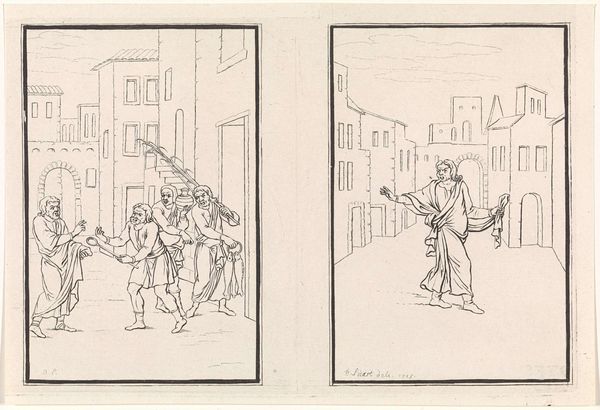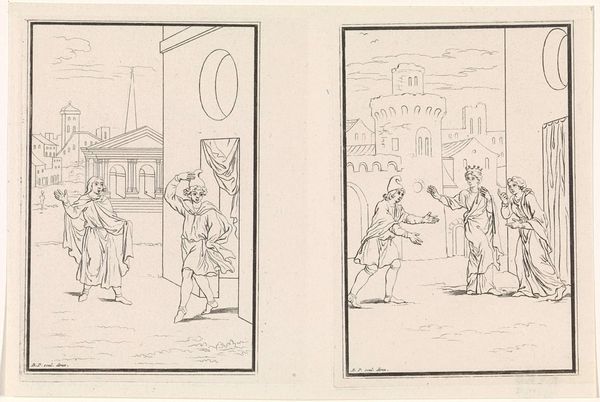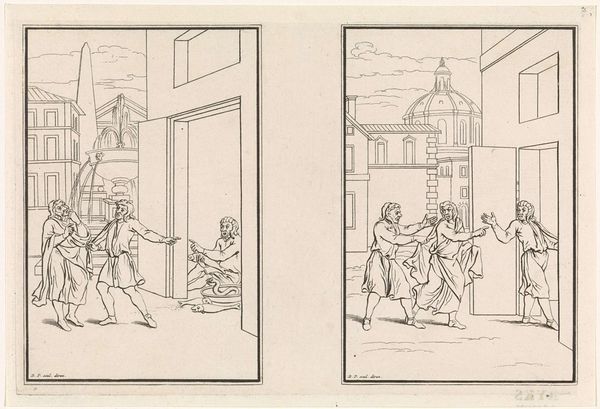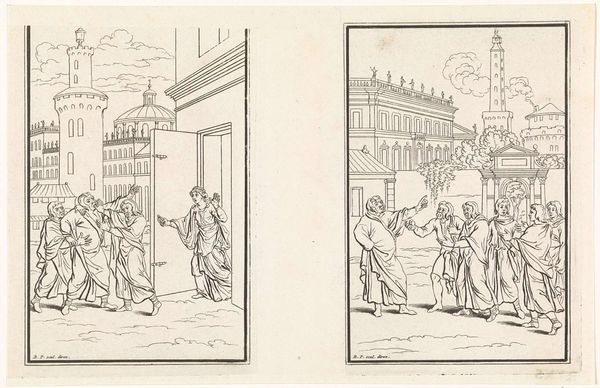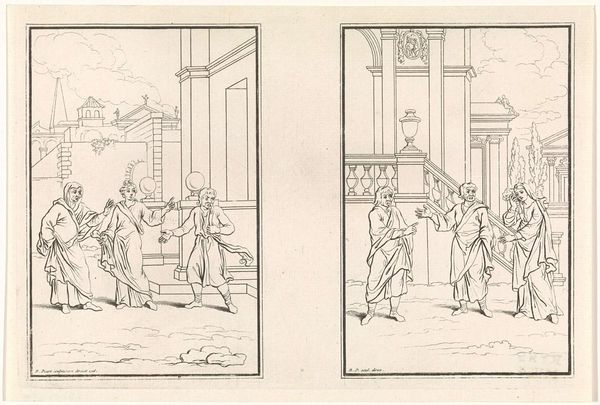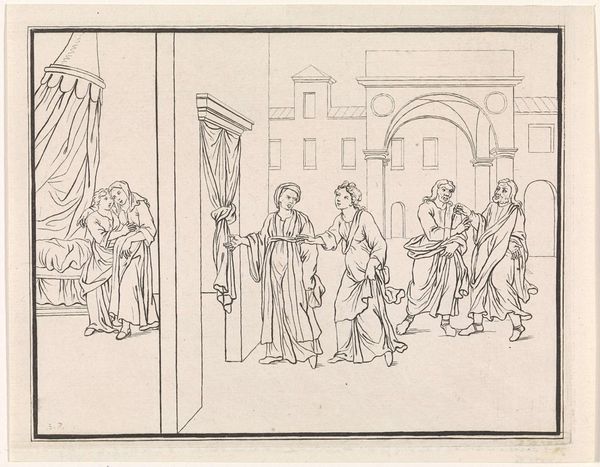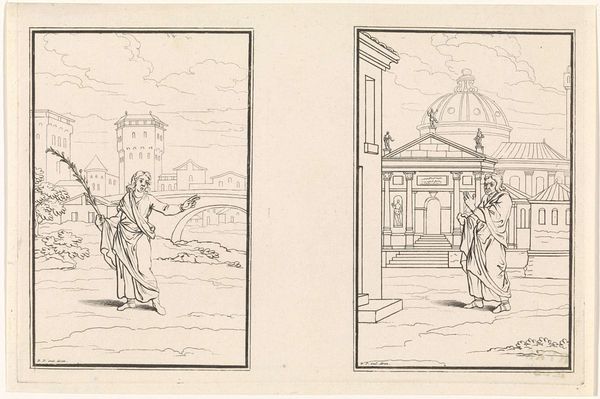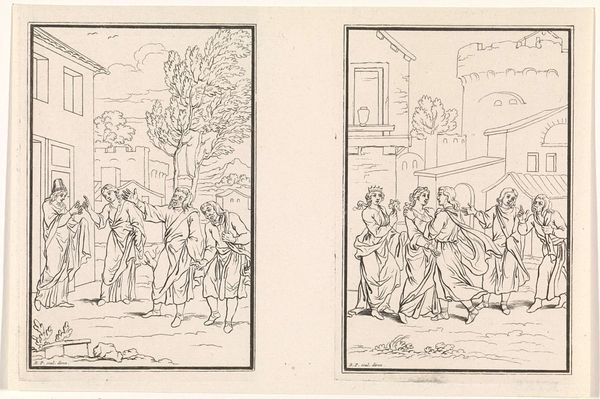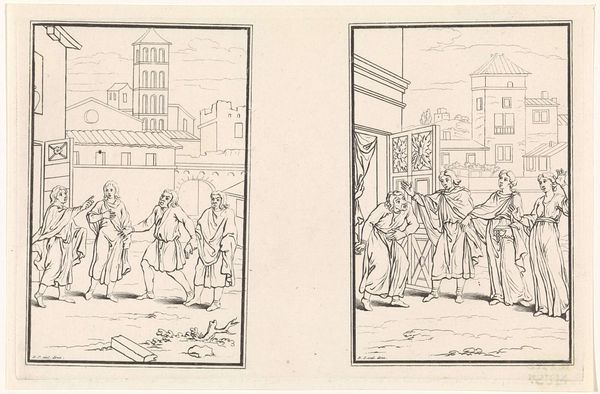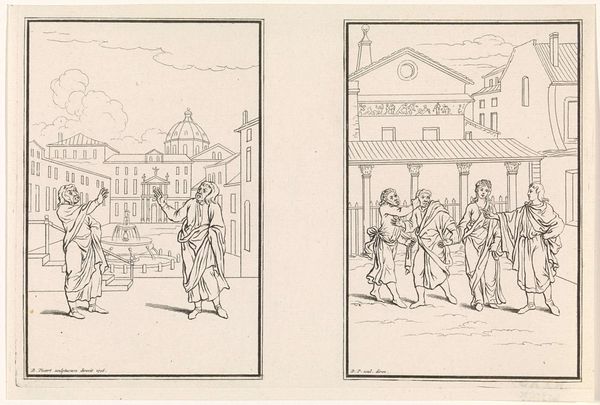
drawing, print, etching, ink
#
drawing
#
comic strip sketch
#
narrative-art
#
baroque
# print
#
pen sketch
#
etching
#
figuration
#
personal sketchbook
#
ink
#
sketchwork
#
ink drawing experimentation
#
pen-ink sketch
#
line
#
pen work
#
sketchbook drawing
#
history-painting
#
storyboard and sketchbook work
#
sketchbook art
Dimensions: height 130 mm, width 187 mm
Copyright: Rijks Museum: Open Domain
Editor: This ink drawing and etching by Bernard Picart, made sometime between 1716 and 1718, depicts two scenes from Terentius’ comedy “Andria”. It's almost like a comic strip, and the architectural settings feel like a stage. What can you tell me about its context and how it was received back then? Curator: Well, Bernard Picart was a master of visual storytelling, deeply influenced by the intellectual circles of his time. Consider the importance of classical education then. Terentius’ comedies were staples, used to teach Latin and impart moral lessons. Picart's choice to illustrate “Andria” highlights the enduring relevance of classical themes – social maneuvering, family expectations – within 18th-century society. Editor: So, these prints would have been widely circulated amongst the educated elite, influencing their understanding of both classical drama and contemporary social dynamics? Curator: Precisely! Prints like these democratized access to art and ideas. They functioned almost like today's mass media, shaping public opinion and reinforcing certain social values. Consider, too, the role of institutions – schools, libraries, even private collections – in disseminating these images. They weren't just decorative; they were tools of education and social control. Editor: That's fascinating! It makes me wonder about the messages these scenes were intended to convey, and who exactly Picart was trying to reach with his art. Were they explicitly didactic or was their goal mainly for entertainment purposes? Curator: It's a duality, I'd say. Didacticism cloaked in entertainment. The comedy's familiar narrative allowed Picart to engage his audience on multiple levels. It encouraged them to think critically about social customs while still providing visual amusement. What's most interesting for me is to analyze this piece not as a isolated aesthetic piece, but as a vector of social commentary. Editor: That really shifts my perception of the artwork! I always saw it as just a pretty etching but knowing it had a function within the 18th century changes everything.
Comments
No comments
Be the first to comment and join the conversation on the ultimate creative platform.

